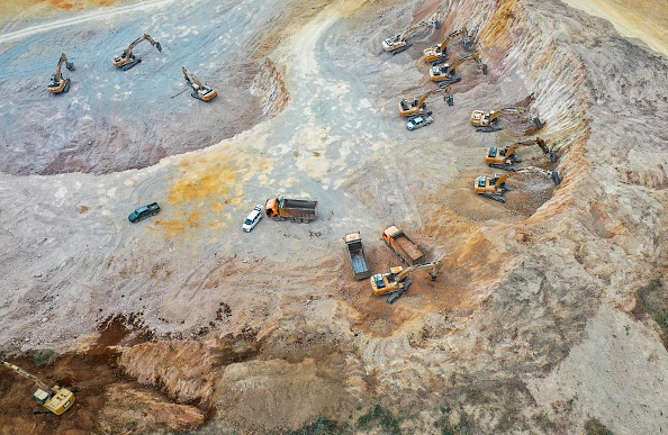Earlier this year, an Australian mining firm, Syrah Resources, began production along the Mississippi River in Louisiana, marking what the Biden administration hopes will be a pivotal move towards reducing China’s dominance over the global supply chain for critical minerals. This plant is poised to be a significant player in the production of graphite anodes for lithium-ion batteries, essential for electric vehicles (EVs). Financed with a $150 million loan from the U.S. International Development Finance Corp., this facility represents the first of its kind in the United States and is seen as a strategic step in reshaping the global energy landscape.
A Strategic Move Against China’s Dominance
The Louisiana plant sources graphite from a mine in Mozambique and is a relatively small step in addressing domestic demand. However, the Biden administration and its supporters are hopeful that this initiative will serve as a model for creating a clean energy supply chain that bypasses China. This is particularly important as the United States and its allies grow increasingly wary of China’s control over critical minerals, which are vital for the technologies expected to dominate the 21st century, such as batteries, solar panels, wind turbines, and electric vehicles.
Tax Incentives and the Inflation Reduction Act
Central to this strategy are substantial tax incentives provided through the Inflation Reduction Act, which has already led to $19 billion in investment commitments for electric vehicle and clean energy manufacturing in Texas alone. These incentives are designed to spur the development of domestic clean energy technologies and reduce reliance on Chinese-controlled supply chains. However, some in Washington, including former senior adviser to President Joe Biden, Brian Deese, believe the U.S. government should take even more aggressive measures. Deese has advocated for the creation of an American clean energy finance authority on the scale of the Marshall Plan, which helped rebuild Europe after World War II.
China’s Established Lead in Critical Minerals
China has spent the last two decades building a vast network of mining operations both at home and abroad, securing over 50% of the world’s processing capacity for critical minerals like lithium, cobalt, graphite, and rare earth elements. This has positioned China as the global leader in the production of batteries, solar panels, and electric vehicles. As a result, the U.S. and its allies face a significant challenge in establishing alternative supply chains.
The Long Road Ahead
Gracelin Baskaran, an economist at the Center for Strategic and International Studies, warns that while efforts are underway to build these facilities, the process of establishing a new supply chain is a long-term endeavor. “We’re looking at five to 20 years for mining and processing to come online,” she explains. This timeline means that for the foreseeable future, China’s dominance in the critical minerals market will likely continue, with state-backed Chinese companies potentially outpacing U.S. and allied competitors by producing minerals far beyond current demand and driving down prices.
National Security Concerns
The dominance of Chinese companies in critical mineral markets is not just an economic concern but also a national security issue. Avery Ash, a lobbyist with Securing America’s Future Energy, highlights the risks, noting that China’s control over a vast majority of critical minerals allows them to manipulate market prices to their advantage. This creates a challenging environment for companies in the U.S. and allied countries trying to secure these essential resources.
Global Pushback Against China’s Influence
In response to China’s market control, the U.S. and the European Union have been pushing back, with other countries like Brazil, India, Argentina, Japan, and Indonesia joining efforts to limit Chinese imports. The Biden administration is also working to build momentum against China’s dominance through trade agreements like the Minerals Security Partnership, which 14 countries and the European Union signed last year in South Africa.
Financial Challenges in Competing with China
Despite these efforts, the question remains whether the U.S. can sustain its support for these initiatives. While there is bipartisan support for reducing reliance on Chinese manufacturing, there is also skepticism about the U.S.’s ability to match China’s level of investment. For example, China invested more than $92 billion through its Belt and Road Initiative last year, dwarfing the $9.3 billion invested by the U.S. International Development Finance Corp. across all sectors.
Clark Packard, a research fellow at the Cato Institute, underscores this challenge, noting that “The U.S. is never going to out-subsidize China. We don’t dump a ton of subsidies over a long period of time. There isn’t a persistent industrial policy here like there is in China.”
Conclusion
As the United States embarks on its journey to establish a clean energy supply chain independent of China, it faces a complex and long-term challenge. The Biden administration’s efforts, supported by substantial tax incentives and international partnerships, represent crucial steps towards reducing reliance on Chinese-dominated supply chains. However, the path forward will require sustained commitment, strategic investment, and international cooperation to ensure that the U.S. and its allies can compete effectively in the global clean energy market.
